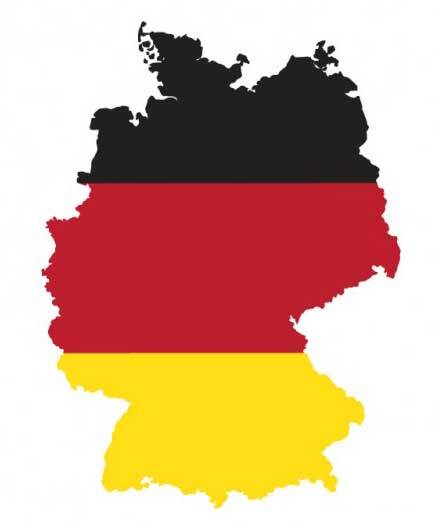Linear Docking
Description of the algorithms.
Mathematical modeling identification of active
sites interaction of protein molecules
Mathematical modeling identification of active
sites interaction of protein molecules
Description of the algorithms
Algorithm 1
This algorithm has been developed to search for protein sites responsible for protein interactions.A given length shear box (Fig.1) is shifted along the amino acid sequences of the two proteins. For each shift, the stability lg(cond(W)) of the specified area is calculated (Fig.2). The best correlation with the experiment is characteristic of graphs with a cluster of minimum values (Fig.3-4).
During the development of this algorithm we have made the following assumptions:
- we know the short amino acid sequence of one protein, which takes an active part in binding to another protein, with formation large numbers nearly located interacting amino acid residues, for example, the formation of homodimers Mdm2−Mdm2 and Nap1−Nap1,
- we do not know the active site of the whole protein responsible for binding to the short polypeptide sequence.
Thus, using algorithm 1, we find the active site on the polypeptide sequence of the whole protein. This algorithm presents two vectors:
- we know the short amino acid sequence of one protein, which takes an active part in binding to another protein, with formation large numbers nearly located interacting amino acid residues, for example, the formation of homodimers Mdm2−Mdm2 and Nap1−Nap1,
- we do not know the active site of the whole protein responsible for binding to the short polypeptide sequence.
Thus, using algorithm 1, we find the active site on the polypeptide sequence of the whole protein. This algorithm presents two vectors:

Fig.1. The scheme algorithm 1.

Fig.2. Scheme dependence of lg(cond(W)) from Amino acid sequence. Thus, each resulting value of lg(cond(W)) will correspond to a strictly defined segment of one-dimensional array P2. Note that on the graph it is postponed opposite the first amino acid residue of a segments P21, P22, P23, P24 or P25 one-dimensional array P2.

Fig.3. Results of numerical simulation of the interaction of Mdm2 with Mdm2, frame size equal to 20 a.a., e = 1. The red dots denote the 10 minimum values of lg(cond(W)).

Fig.4.The ten minimum values of lg(cond(W)) and the amino acid sequences of the detected regions of the Mdm2 protein at a frameshift length equal to 20 a.a., e = 1
lg(cond(W)) is common logarithm of condition number.
N0 is number of amino acid residual.
lg(cond(W)) is common logarithm of condition number.
N0 is number of amino acid residual.
Description of the algorithms
Algorithm 2
This algorithm has been developed to search for protein sites responsible for protein interactions.A given amino acid sequences is shifted along the amino acid sequences of the two proteins. For each shift, the stability lg(cond(W)) of the specified area is calculated. The best correlation with the experiment is characteristic of graphs with a cluster of minimum values (Fig 3-4) .
The scheme search interacting sections is shown in Fig.5. In this algorithm we take whole amino acid sequences of the two proteins P1 and P2. For selecting interacting sites, we shift the frame of a specific size along two one-dimensional arrays of proteins P1 and P2. Note that algorithm 2 can be used to analyze the interaction of two proteins, which have identical sites of interaction during the formation of a dimer.

Fig.5. The scheme algorithm 2.
Description of the algorithms
The effect of temperature on the
character of binding of monomeric proteins to aqueous
solutions
character of binding of monomeric proteins to aqueous
solutions
This chapter presents a developed theoretical method that allows one to analyze the effect of the temperature of an aqueous solution on the character of the formation of protein dimers, as well as to determine the regions of protein molecules that make the greatest contribution to the stabilization of dimers. We have developed a mathematical model to take into account the influence
of the temperature of the aqueous solution on the nature of the binding of
protein molecules. The physical model developed by us makes it possible to determine the stability of protein complexes, as well as to predict the possible aggregation of proteins when the temperature of the aqueous solution changes.
Let us note that the study of protein aggregation is a topical trend in contemporary molecular biophysics. The aggregation of proteins is one of the processes that occur continuously in a cell. Each protein is characterized by its native conformation, which allows it to fulfill its prescribed biological functions. However, genetic mutations and errors in the synthesis of proteins on a ribosome may lead to the formation of misfolded protein structures.
The authors suggest that such a model of accounting for phosphorylation of
amino a acid residues in the interaction of small regions of proteins will help in
future to determine the effect of phosphorylation processes on the stability of whole protein complexes.
of the temperature of the aqueous solution on the nature of the binding of
protein molecules. The physical model developed by us makes it possible to determine the stability of protein complexes, as well as to predict the possible aggregation of proteins when the temperature of the aqueous solution changes.
Let us note that the study of protein aggregation is a topical trend in contemporary molecular biophysics. The aggregation of proteins is one of the processes that occur continuously in a cell. Each protein is characterized by its native conformation, which allows it to fulfill its prescribed biological functions. However, genetic mutations and errors in the synthesis of proteins on a ribosome may lead to the formation of misfolded protein structures.
The authors suggest that such a model of accounting for phosphorylation of
amino a acid residues in the interaction of small regions of proteins will help in
future to determine the effect of phosphorylation processes on the stability of whole protein complexes.
Description of the algorithms
The effect of
phosphorylation on the stability of the formation
of biological complexes
phosphorylation on the stability of the formation
of biological complexes
In this chapter, we develop a physical model of the effect of phosphorylation of the amino acid residues of the polypeptide chain of a protein on the formation of biological complexes with other proteins, for example, the phosphorylation of the flexible N−terminus of the p53 protein by two amino acid residues 18a.a. and 20a.a., as well as an analysis of the stability of the biological complexes P53−Mdm2 and P53−P300 formed before and after phosphorylation. A developed model of phosphorylation of the main(key)
amino acid residues of the protein will allow us to predict an increase or decrease
in the stability of the formed protein complexes before and after phosphorylation
with the participation of other non-phosphorylated proteins
amino acid residues of the protein will allow us to predict an increase or decrease
in the stability of the formed protein complexes before and after phosphorylation
with the participation of other non-phosphorylated proteins

